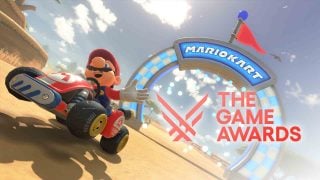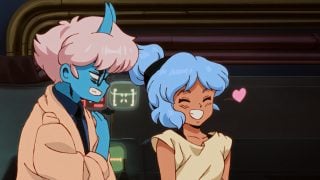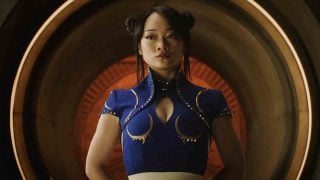The Legend of Zelda: Breath of the Wide has a massive world map, so naturally Nintendo felt the need to name many of Hyrule’s landmarks and settlements. Rather than solely relying on brand new names, however, the game is filled to the brim with slight nods to older locations and characters in the series.
While these will no doubt send timeline theorists into a frenzy for years to come (or at least until its place is confirmed), many of them are likely just cute references. After all, Breath of the Wild almost made it in time to celebrate the franchise’s 30th Anniversary.
We decided to pour over the map and highlight the references we’ve found. Needless to say, there are spoilers, and given the massive scope of Hyrule we no doubt missed a few. Feel free to provide your own suggestions in the comments!
The Great Plateau

This is the location almost everyone is most familiar with, being a relatively closed off starting zone that was picked apart at 2016’s E3. Nevertheless, there are a few noteworthy spots.
- Temple of Time
This one almost goes without saying. The Temple of Time was first introduced in Ocarina of Time and has made multiple appearances since. Skyward Sword gave its origin — it was where Skyloft’s Goddess Statue landed with Link and Zelda aboard, who christened the land Hyrule. This is even referenced by the Old Man. While the Master Sword pedestal of past games is gone, a smaller Goddess Statue takes its place. - Mount Hylia
The Zelda franchise had used “Hylia” in several places before but it wasn’t until Skyward Sword that its relevance became clear — Hylia is a fourth goddess who had powers that are now passed down the Hyrule royal family bloodline. This is a major plot point throughout Link’s memories.
Lanayru Region

Using a name borrowed from earlier games, Lanayru is in part named after the goddess Nayru and is a region mostly focused on water. The Wetlands are covered in references to two dreamy games…
- Mercay, Linebeck, Zauz, Bannan and Molida Islands
All of of these islands are direct references to Phantom Hourglass — Mercay Island is where Link first wakes up in the game, Linebeck is perhaps its most iconic character; meanwhile Zauz helps Link forge the Phantom Sword to take on Bellum. Both Bannan and Molida are also islands you visit in Phantom Hourglass. - Goponga Island and Village
This ruined area is named after a similar Zelda location — the Goponga Swamp found in Link’s Awakening. You’ll remember it as the place you must walk Madam MeowMeow’s Chain Chomp to gain access to the Bottle Grotto dungeon. - Horon Lagoon, Tarm Point and Lodrum Headland
Players of Oracle of Seasons will remember Horon Village as the main town of the Holodrum region. Add in Tarm Point, which shares a name with Holodrum’s Tarm Ruins, this area is almost certainly calling back to that game. - Brynna Plain
Here’s a reference to the other Oracle game, Ages, which took place in Labyrnna. - Ruto Lake and Precipice
Perhaps the most famous Zora of all, Ruto is the princess seen in Ocarina of Time who pledges to marry Link, only to go and become one of the Seven Sages. Her name first appeared as a town in Zelda 2. - Rutala Dam and Ralis Pond
These seem to be Twilight Princess nods — Queen Rutela was the Zora Queen murdered before the game’s events by Zant’s forces, while Prince Ralis was her son who spent much of the game sick after escaping to Hyrule Castle to ask for aid. Rutala is a different spelling of course, but it isn’t that much of a leap. - Oren Bridge
This is a reference to the most recent major Zora — Oren, of Link Between Worlds. She is one of the sages in that game, first appearing in a bloated state thanks to a thief stealing her Smooth Gem. This is also notably the only map reference to one of the River Zora, the more scale-covered, fish-like species. - Mikau and Lulu Lakes
These are two famous Zora in the lands of Termina, as part of the Indigo-Go’s — Mikau being the lead guitarist and Lulu the singer. Considering they are Majora’s Mask characters, their fates are quite sad. - Tabahl Woods and Tal Tal Peak
The Tabahl Wasteland in Link’s Awakening was a creepy wood filled with dead trees. Tal Tal Peak, meanwhile, is a lot more obvious — Tal Tal Mountain is where the Wind Fish’s Egg resided. - Spool Bight
This may be a reference to the Spool Swamp found in Oracle of Seasons, which is probable given its close proximity to the aforementioned Horon Lagoon. - Veiled Falls
While not as strong a connection as some, The Minish Cap had an area called Veil Falls. Given both Minish Cap and Breath of the Wild share a director, it might not be a coincidence. - Ja’Abu Ridge
Another pretty obvious one if you’ve played Ocarina of Time or even Oracle of Ages – Lord Jabu Jabu was the name of the massive fish that lives near Zora’s Domain. - Sahasra Slope
This is a shortened version of Sahasrahla, the wise old man found in A Link to the Past. He was the elder of Kakariko Village in that game before he fled after Agahnim’s take-over, hence his proximity. - Bonooru’s Stand and Pierre Plateau
Surprisingly, this mountain has two locations named after the Scarecrows found in Ocarina of Time. Bonooru was found next to Lake Hylia and let you register the Scarecrow’s Song, while Pierre travelled Hyrule. - Pillars of Levia
Another one that might be a bit of a stretch, but there’s the possibility this area is named after Levias, the massive flying whale of Skyward Sword. - Lake Siela
Back in Phantom Hourglass, Link was accompanied by the fairy Ciela. - Tuft Mountain
This has the potential to be the most recent reference of all – King Tuft is the monarch of the Hytopia region seen in Tri Force Heroes. While it may seem like a bit of a stretch, there are various other mountains scattered around Breath of the Wild dedicated to other kings. - Koholit Rock
This little island brings to mind a lot of Link’s Awakening memories, which are only driven home by the barely obscured reference to Koholint Island. - Toronbo Beach
Just in case you somehow missed the Link’s Awakening reference, this just drives it home – Toronbo Shores is where Link wakes up in that game and where he retrieves his lost sword. - Malin Bay
This could be an example of the translators not changing an “L” into an “R”, a common quirk in some localizations. If you swap them out in this case, you get Marin bay. Link’s Awakening fans will need no introduction to that enduring character. - Kanalet Ridge
Another Link’s Awakening callback, this time to Kanalet Castle, the former home of Prince Richard. - Rok Woods
This could be a nod to either the recurring Roc’s Feather/Cape items, or a simple shortened form of Octorok. - Tingel, Ankel, Knuckel and Davdi Islands
These four islands off Hyrule’s east coast are perhaps the most obvious references in the game, at least to those who have played Wind Waker. They’re slightly altered versions of the four Tingle brother names: Tingle, Ankle, Knuckle and David Jr. - Kaepora Pass
A clear nod to Ocarina of Time and Majora’s Mask’s slightly frustrating owl guide. - Ukuku Plains
Yet another Link’s Awakening locale alluded to here; the Ukuku Prairie. - Darunia Lake
A pretty obvious reference to Ocarina of Time’s Goron chief and sage, Darunia. It’s also worth noting that Darunia gets something of a cameo in the game too, with his face being carved into the cliff side facing Goron City, with his son on his shoulder. - Lake Darman
A slightly shortened form of Darmani, the deceased Goron chief in Majora’s Mask. - Goro Cove
“Goro” is a common verbal tic of the Gorons. - Bridge of Eldin
There is a rather famous Bridge of Eldin in Twilight Princess that went on to appear as a stage in Super Smash Bros. Brawl and its Wii U sequel. The one found here, however, is very different – being made of metal and working as a drawbridge. - Gortram Cliff
Here’s a reference to one of Skyward Sword’s Gorons. Gortram ran the Lanayru Shipyard’s minecart rollercoaster minigame. - Gero Pond
While this location takes its name from “Gero”, the Japanese onomatopoeic word for the noise a frog makes, its vicinity to Death Mountain is likely a nod to Don Gero, the frog-hat wearing Goron conductor of the frog choir in Majora’s Mask. - Lake Saria
Another reference to one of Ocarina of Time’s sages, this time it’s the Kokiri girl Saria. - Mido Swamp
Fittingly there’s another Kokiri-related location, named after Mido, Link’s bully in Ocarina of Time. It’s rather fitting his name lives on – there was also a Mido Town in Zelda 2; the only city (retroactively) named after an Ocarina of Time character that wasn’t a sage. - Mekar Island
There’s a slight name change here but there’s very little doubt this is a reference to the most famous Korok of all – Makar. - Elma Knolls
It’s your call what this is a reference to – the rather minor Korok Elma from the Wind Waker, or the Xenoblade Chronicles X character. Given the fact Monolith Soft had a hand in development I’m guessing it’s the latter. - Minshi Woods and Pico Pond
These are likely two nods to the Minish Cap, with the first being an obvious slight alteration to Minish and the latter being a shortened Picori. - Rauru Hillside and Settlement
Rauru was yet another sage in Ocarina of Time and town name in Zelda 2.
Meanwhile, eastern Lanayru has nods to another set of handheld games…
Zorana

This area is part of Lanayru too, but as it’s much more populated and hosts the returning Zora’s Domain, it has its own section.
Necluda

Necluda is split into two sections on the map, with West Necluda hosting the first major settlement most players will come across: the iconic Kakariko Village. This time around it’s almost entirely inhabited by the Sheikah.
South-East Necluda

Once you reach the south-east coast of Hyrule things get a bit more tropical, with a wide ocean spread in front of you.

Akkala

The north eastern section of Hyrule is dominated by Akkala, which is relatively sparse but it still has a lot to see.

Death Mountain

A franchise staple at this point, Death Mountain once again is home to the Gorons and has many different locales separated by rivers of lava.

Great Hyrule Forest

One of the most notable changes with Breath of the Wild’s map is the fact the Deku Tree and his associated Lost Woods are in the center north, just above Hyrule Castle.

Whew! Given just how many references there are to find in Breath of the Wild’s map, we decided to divide this article into a two parter. Be sure to check back next week to see what secrets the rest of Hyrule holds!
Leave a Comment


